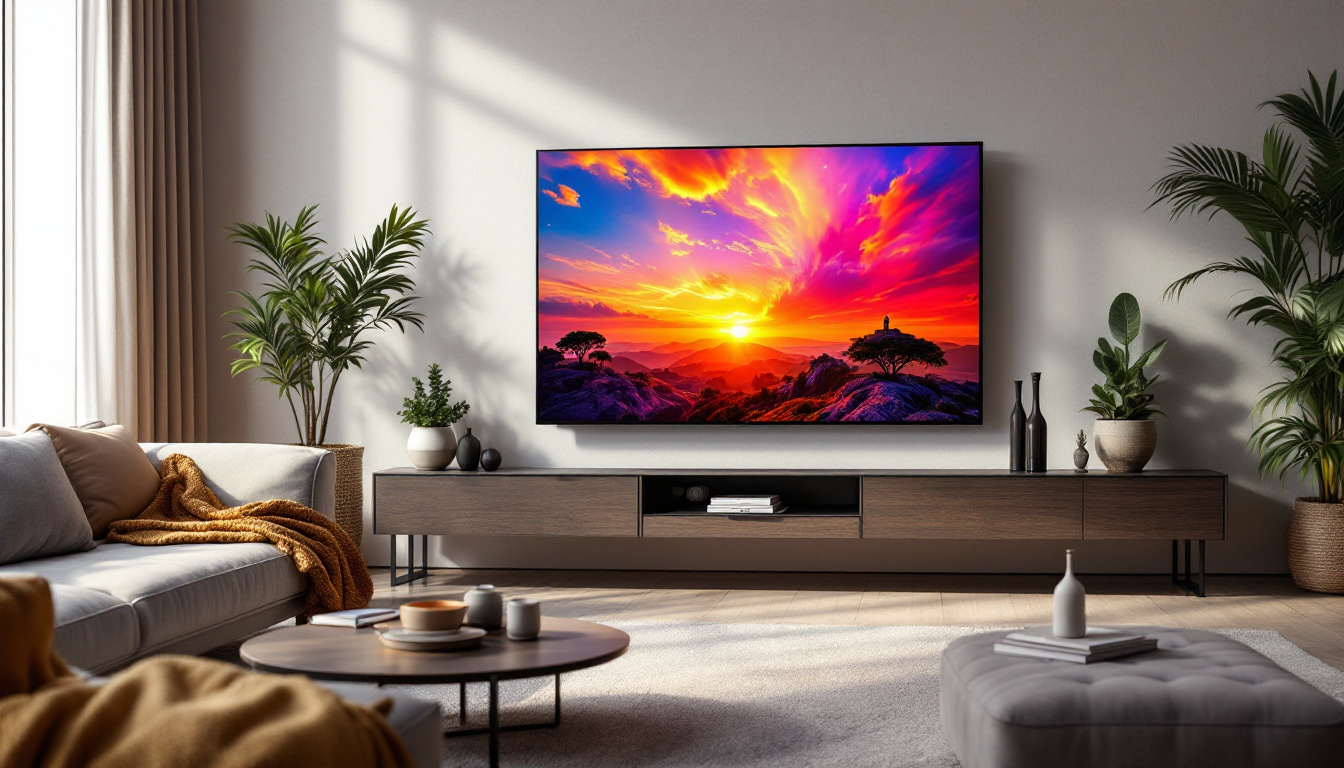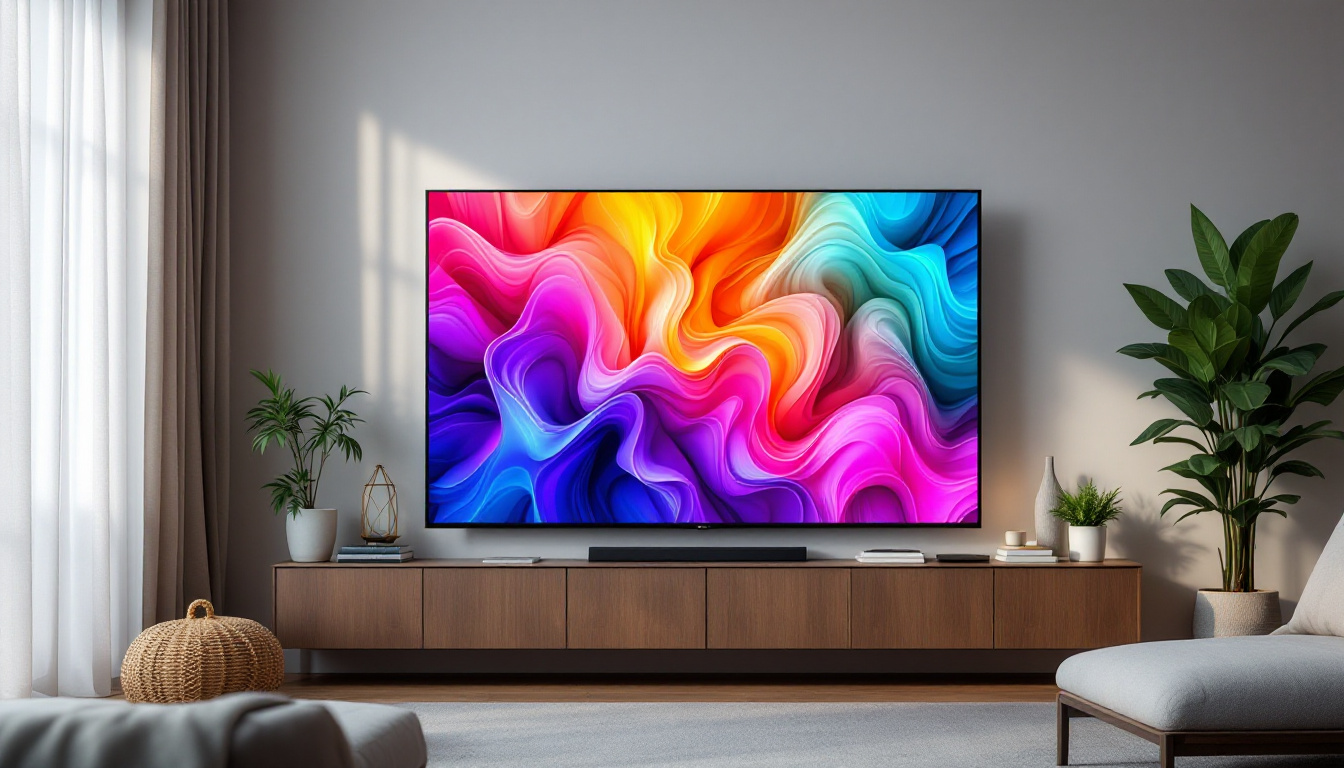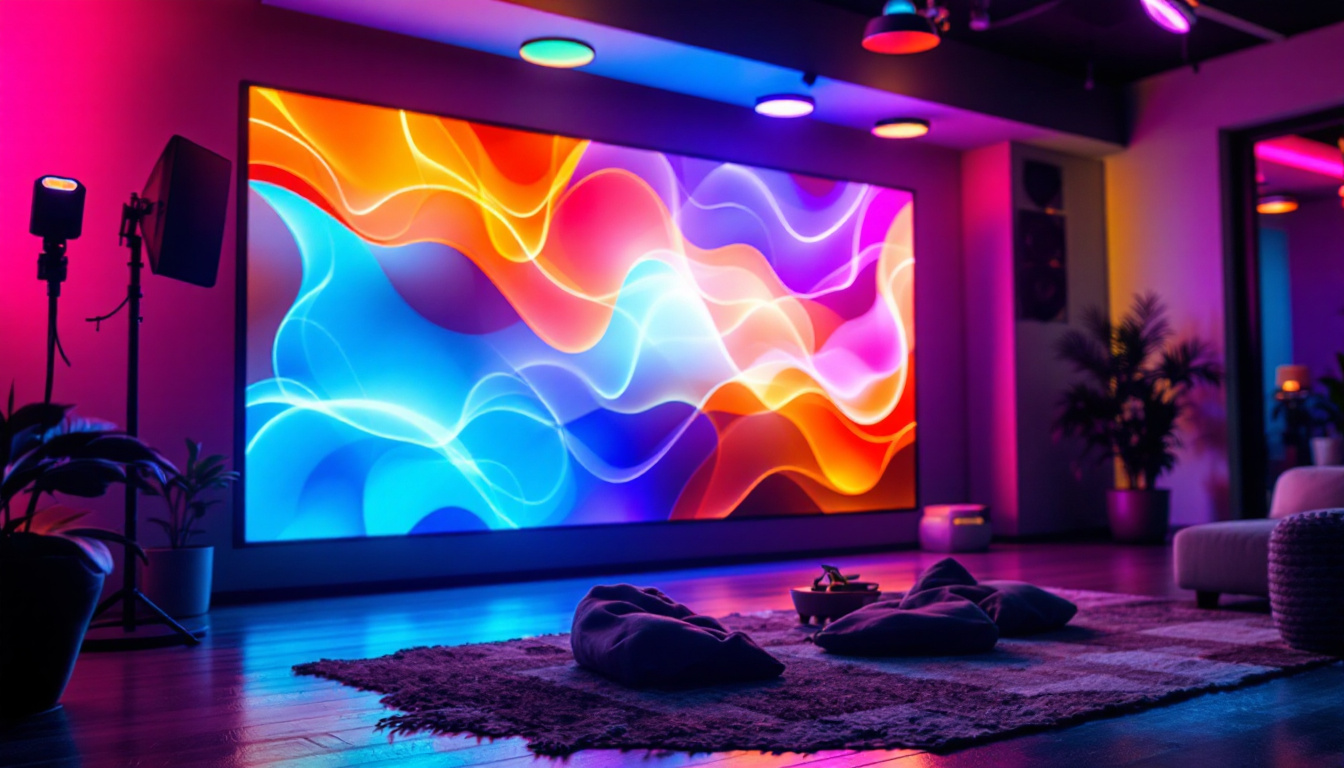Slim LED TV: LED Display Explained
In the ever-evolving world of television technology, slim LED TVs have emerged as a popular choice for consumers seeking high-quality viewing experiences in a compact form factor. This article delves into the intricacies of LED displays, exploring their technology, advantages, and how they compare to other types of televisions.
Understanding LED Technology
LED, or Light Emitting Diode, technology has revolutionized the way we perceive visual content. Unlike traditional LCD TVs that use fluorescent backlighting, LED TVs utilize a series of small diodes to create light, resulting in a more vibrant and energy-efficient display. This advancement has not only improved the quality of images but has also contributed to a more sustainable approach to electronics, as LED technology consumes significantly less power compared to older technologies.
How LED Displays Work
At the core of an LED TV is a liquid crystal display (LCD) panel. The LED technology enhances this panel by providing backlighting. There are two primary types of LED backlighting: edge-lit and full-array. Edge-lit LED TVs have LEDs positioned along the edges of the screen, while full-array models feature a grid of LEDs behind the entire panel. This difference in backlighting affects not only the brightness but also the contrast and color accuracy of the display. Full-array LED TVs typically offer superior performance, particularly in darker scenes, due to their ability to dim specific areas of the screen independently.
Moreover, the advancements in LED technology have led to the development of local dimming features, which further enhance the viewing experience. By selectively dimming or brightening different zones of the screen, these TVs can produce deeper blacks and more vivid colors, making them particularly appealing for movie enthusiasts and gamers who crave immersive visuals. The result is a dynamic range that brings out the finer details in both shadowy and brightly lit scenes, allowing viewers to appreciate the full spectrum of color and light.
Types of LED TVs
Within the LED category, there are various types that cater to different preferences and needs. The most common types include:
- Standard LED TVs: These are the most basic form of LED TVs, providing a good balance of performance and price.
- QLED TVs: Utilizing quantum dot technology, QLED TVs enhance color and brightness, making them ideal for bright viewing environments.
- OLED TVs: Although technically not LED, OLED (Organic Light Emitting Diode) TVs offer superior contrast and color depth by allowing each pixel to emit its own light.
In addition to these popular types, there are also variations like Mini-LED and MicroLED TVs that are gaining traction in the market. Mini-LED technology uses smaller LEDs for backlighting, allowing for more precise control over local dimming and improved contrast ratios. MicroLED, on the other hand, takes it a step further by using microscopic self-emitting LEDs, resulting in stunning picture quality with incredible brightness and color accuracy. These innovations are pushing the boundaries of what is possible in display technology, promising even more breathtaking viewing experiences in the near future.
Advantages of Slim LED TVs
Slim LED TVs come with a plethora of advantages that make them an appealing choice for modern households. From energy efficiency to design aesthetics, these televisions offer a range of benefits that enhance the overall viewing experience.
Energy Efficiency
One of the standout features of LED technology is its energy efficiency. LED TVs consume significantly less power compared to traditional LCD or plasma screens. This not only helps in reducing electricity bills but also contributes to a smaller carbon footprint, making them an environmentally friendly option. In fact, many models are Energy Star certified, ensuring that they meet strict energy efficiency guidelines set by the EPA. This certification not only reassures consumers about their purchase but also encourages manufacturers to innovate further in energy-saving technologies.
Picture Quality
When it comes to picture quality, slim LED TVs excel in delivering vibrant colors and sharp images. The use of advanced technologies, such as HDR (High Dynamic Range), further enhances the viewing experience by providing a wider range of colors and improved contrast ratios. The incorporation of local dimming features allows for deeper blacks and brighter whites, creating a more dynamic and lifelike picture that draws viewers into the content.
Moreover, the fast response times of LED displays reduce motion blur, making them ideal for fast-paced content such as sports and action movies. Viewers can enjoy a more immersive experience without the distractions of lag or ghosting. Additionally, many slim LED TVs now come equipped with smart technology, allowing users to stream content directly from popular platforms like Netflix and Hulu, further enriching their viewing options and making it easier than ever to access a vast library of entertainment.
Sleek Design
The slim profile of LED TVs allows them to fit seamlessly into any living space. Their lightweight design makes wall mounting easy, providing flexibility in placement and enhancing the aesthetic appeal of a room. Whether placed on a stand or mounted on a wall, slim LED TVs can complement modern decor styles. With ultra-thin bezels, these televisions maximize screen space, giving the illusion of a larger display while minimizing the physical footprint.
Furthermore, many manufacturers offer customizable options for stands and mounts, allowing consumers to choose designs that best match their interior style. Some models even feature ambient lighting or customizable backlighting, which can enhance the viewing atmosphere and create a more immersive experience during movie nights or gaming sessions. This attention to design detail ensures that slim LED TVs are not just functional devices but also stylish additions to any home environment.
Comparing Slim LED TVs to Other Technologies
While slim LED TVs offer numerous advantages, it is essential to compare them with other television technologies to understand their unique position in the market.
LED vs. OLED
OLED technology has gained popularity due to its ability to produce perfect blacks and exceptional color accuracy. Unlike LED TVs, which rely on backlighting, OLED displays utilize organic compounds that emit light when an electric current is applied. This allows for individual pixel control, resulting in superior contrast ratios.
However, OLED TVs tend to be more expensive than their LED counterparts. For consumers who prioritize budget and still desire excellent picture quality, slim LED TVs remain a strong choice.
LED vs. Plasma
Plasma TVs were once the go-to option for high-quality displays, particularly for larger screen sizes. However, they have largely been phased out in favor of LED technology. Plasma screens are heavier, consume more power, and are prone to burn-in issues, where static images can leave a permanent mark on the screen.
In contrast, slim LED TVs offer a lightweight, energy-efficient alternative with no risk of burn-in, making them a more practical choice for everyday use.
Factors to Consider When Buying a Slim LED TV
Choosing the right slim LED TV involves considering several factors that can significantly impact the viewing experience. Understanding these elements can help consumers make informed decisions based on their preferences and needs.
Screen Size
Screen size is one of the most critical factors to consider when purchasing a television. The ideal size depends on the viewing distance and the size of the room. A larger screen can enhance the viewing experience, but it is essential to ensure it fits comfortably within the space.
Generally, a good rule of thumb is to sit at a distance of 1.5 to 2.5 times the diagonal size of the screen for optimal viewing. For example, a 55-inch TV is best viewed from approximately 6.5 to 11.5 feet away.
Resolution
Resolution refers to the number of pixels that make up the image on the screen. Higher resolutions provide more detail and clarity. The most common resolutions available in slim LED TVs include:
- Full HD (1080p): Offers a resolution of 1920 x 1080 pixels, providing excellent picture quality for most content.
- 4K Ultra HD (2160p): With a resolution of 3840 x 2160 pixels, 4K TVs offer four times the detail of Full HD, making them ideal for larger screens and high-definition content.
- 8K Ultra HD: The latest advancement in resolution technology, 8K TVs provide an astounding 7680 x 4320 pixels, though content is still limited.
Smart Features
Many slim LED TVs come equipped with smart features, allowing users to access streaming services, browse the internet, and use various applications directly from their TV. These features enhance convenience and expand the range of available content.
When considering a smart TV, look for user-friendly interfaces, app availability, and regular software updates to ensure a seamless experience.
Maintenance and Care for Slim LED TVs
To ensure the longevity and optimal performance of a slim LED TV, proper maintenance and care are essential. Simple practices can help keep the television in excellent condition for years to come.
Cleaning the Screen
Keeping the screen clean is crucial for maintaining picture quality. Use a microfiber cloth to gently wipe the screen, avoiding harsh chemicals that can damage the display. For stubborn spots, a mixture of distilled water and vinegar can be used, but always apply it to the cloth first rather than directly on the screen.
Proper Ventilation
LED TVs generate heat during operation, so ensuring proper ventilation is vital. Avoid placing the TV in enclosed spaces or near heat sources, as this can lead to overheating and potential damage. Allowing adequate airflow around the unit can help maintain optimal performance.
Conclusion
Slim LED TVs represent a significant advancement in television technology, offering a combination of energy efficiency, superior picture quality, and sleek design. As consumers continue to seek high-quality viewing experiences, understanding the nuances of LED technology becomes increasingly important.
Whether considering a slim LED TV for its aesthetic appeal or its advanced features, it is essential to evaluate personal preferences and requirements. By doing so, consumers can make informed choices that enhance their home entertainment experience.
In a market filled with options, slim LED TVs stand out as a reliable choice for those looking to enjoy their favorite content in style and comfort.
Discover the Future of Home Entertainment with LumenMatrix
Ready to elevate your viewing experience with the latest in LED display technology? LumenMatrix is at the forefront of innovation, offering a wide array of LED display solutions that bring your favorite content to life. From the comfort of your living room to the excitement of outdoor events, our LED displays are designed to captivate and engage. Explore our Indoor and Outdoor LED Wall Displays, dynamic Vehicle LED Displays, sleek LED Poster Displays, and more to find the perfect match for your home entertainment needs. Check out LumenMatrix LED Display Solutions today and join the revolution in visual communication.































